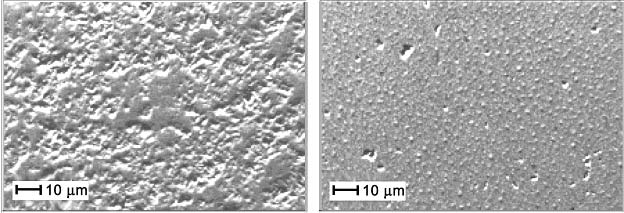4.2.2.4 Polished
surfaces
According to DIN 8589, polishing is not
an independent production process, and is only used in association
with other manufacturing processes. Processes such as polish
grinding, polish honing, polish lapping, electrolytic polishing
and polishing through coating (the application of polish with
mechanical treatment) are distinguished. Polishing is primarily
intended to create a high quality of surface. In contrast
to lapping, the polishing grains are embedded in a cloth or
polishing wheel so that directed tool movement, which is necessary
to create optically reflective surfaces, is achieved. Because
of the low rate of material removal, polishing is time-consuming.
Slight plastic deformation is only normally achieved in ceramic
machining through extremely high localised pressure. For this
reason, the removal of material when polishing ceramic is
explained through scratches involving cutting depths in the
range of nanometres. Polished surfaces are characterised by
smooth areas and hollows, depending on the polishing time
and the polishing grains used. Other surface characteristics
are only occasionally met, and are not typical.

Figure 72: Silicon carbide surfaces polished
with 9 ?m and 0.25 ?m polishing grains
|
|

